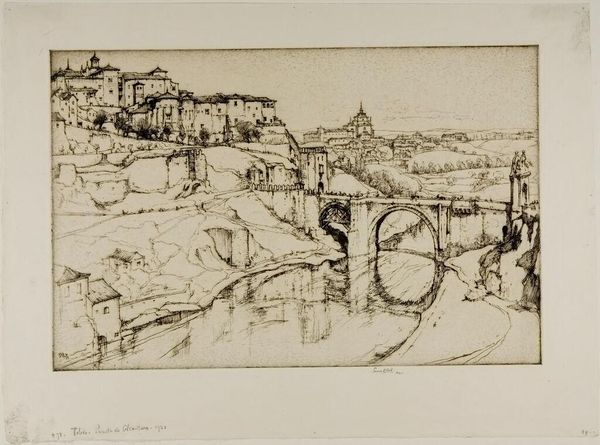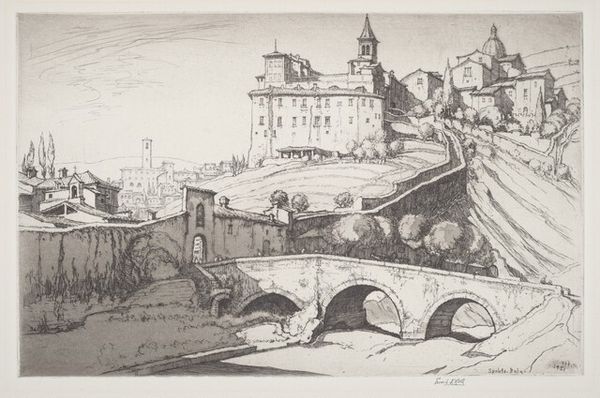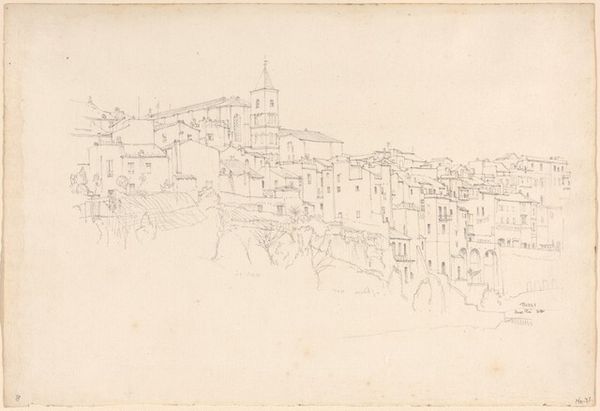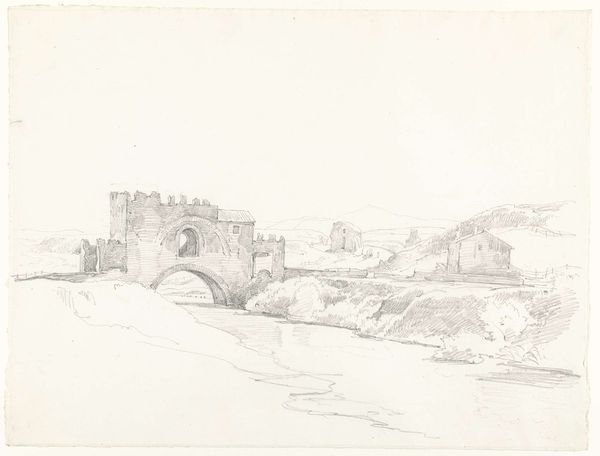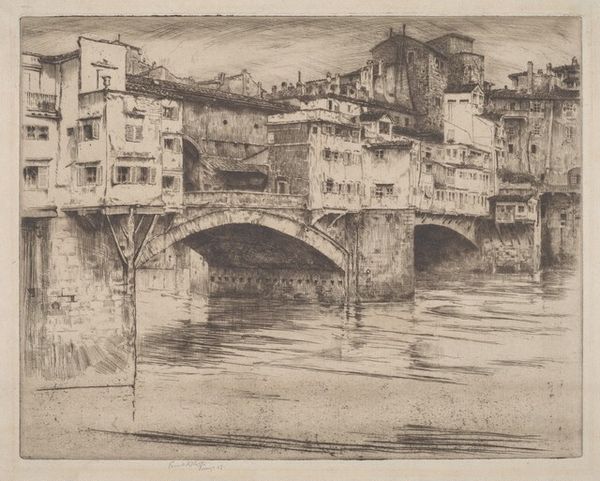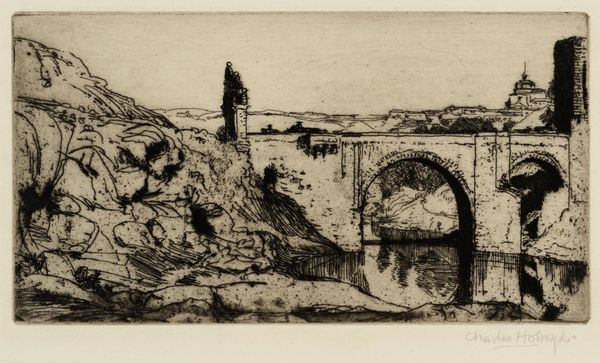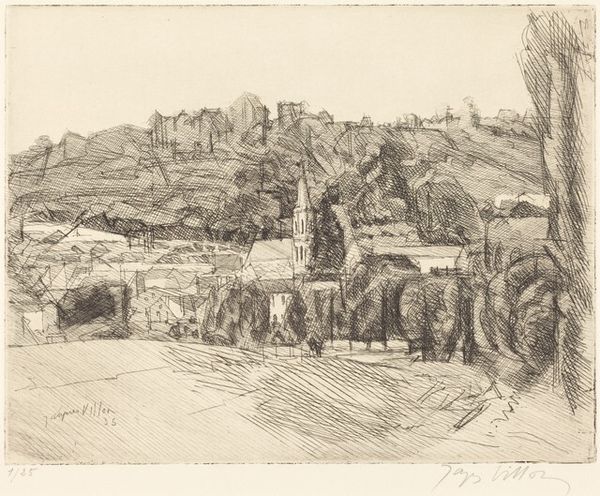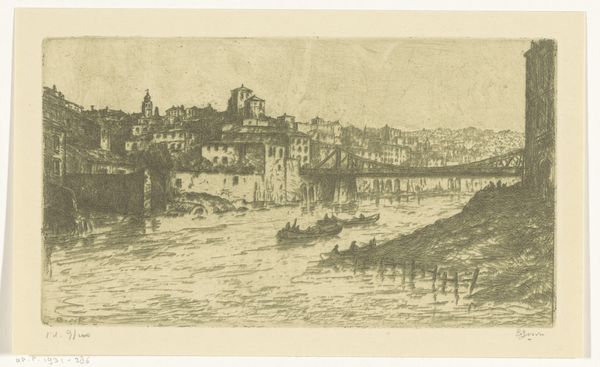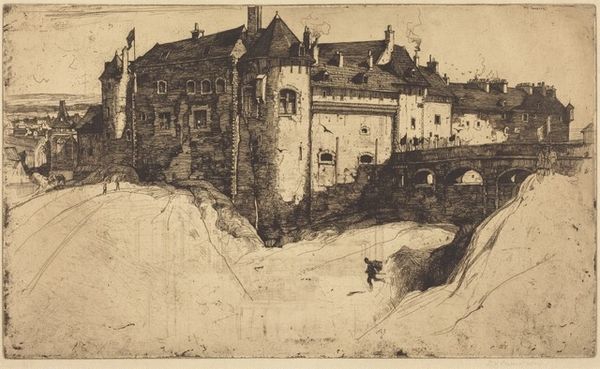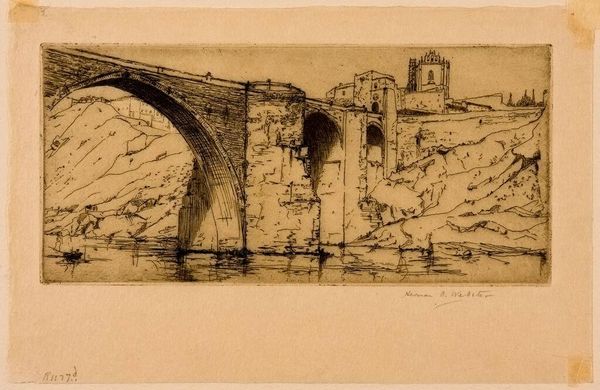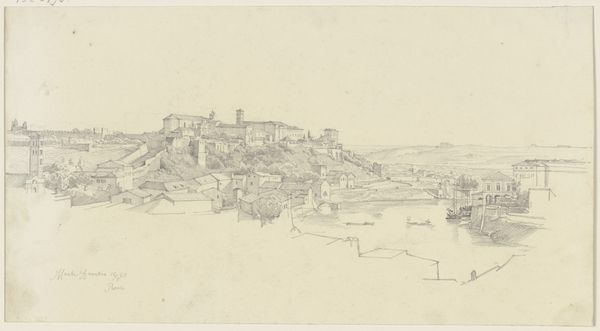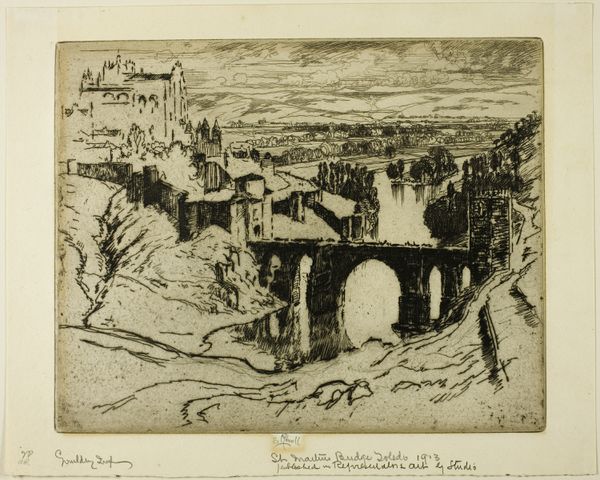
drawing, print, etching, ink, engraving
#
drawing
#
ink drawing
# print
#
etching
#
landscape
#
ink
#
cityscape
#
engraving
#
monochrome
Dimensions: plate: 23.81 × 36.51 cm (9 3/8 × 14 3/8 in.) sheet: 30.8 × 43.5 cm (12 1/8 × 17 1/8 in.)
Copyright: National Gallery of Art: CC0 1.0
Editor: So this is Ernest Roth's "Toledo—Puente de Alcantura" from 1921, an etching in ink. I’m really drawn to how the artist captured so much detail with such a limited palette. What visual elements stand out to you in this print? Curator: Immediately, the dynamic interplay between light and shadow, carefully rendered through the linear precision of etching, establishes the visual structure. Consider how the meticulous cross-hatching defines the form of the bridge and the city above. What impact does this contrast have? Editor: It definitely creates depth and highlights the architectural details, almost like a spotlight on different parts of the city. The reflection in the water, though, seems more abstract. Curator: Precisely. The reflection is gestural, almost a deconstruction of the solid forms above. It emphasizes the flatness of the picture plane, a key element in formal analysis. The sharp lines of the buildings meet softer strokes in the water, what feeling does that generate? Editor: A sense of movement, maybe, and a contrast between the enduring architecture and the ever-changing flow of the river. Does the composition also direct our eye in a particular way? Curator: Without a doubt. The bridge serves as a visual anchor, leading the eye from the foreground into the intricate cityscape in the background, only to then descend into the obscured foreground. Consider how this cyclical movement impacts your experience of the artwork. Editor: That's fascinating. I see it now - the eye really does travel through the whole scene in a continuous loop, guided by the artist's line work. Thank you, I appreciate the view, seen only by a close examination. Curator: A trained viewing eye sees past the initial image. Keep your eye open for future, intriguing composition techniques like this.
Comments
No comments
Be the first to comment and join the conversation on the ultimate creative platform.
